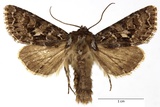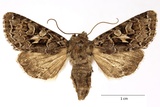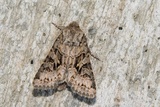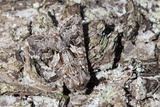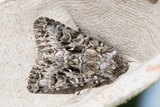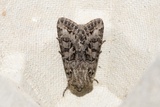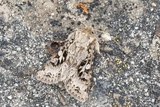Hada plebeja (Linnaeus, 1761) Species
Last modified: Nov. 19, 2025, 5:51 p.m.
A not so common species throughout Belgium. It prefers sandy soils.
This species is considered Near Threatened according to the IUCN Red List category for Flanders 2023.
Details
- Classification
- Family: Noctuidae > Subfamily: Hadeninae > Tribus: Hadenini > Genus: Hada > Species: Hada plebeja
- Vernacular names
- Schaaruil (NL), Shears (EN), La Noctuelle dentine (FR), Zahneule (DE)
- Synonyms
- Hada nana (Hufnagel, 1766) and Hada dentina (Denis & Schiffermüller, 1775)
- First mention in Belgium
- De Sélys-Longchamps E. 1844. Énumération des insectes Lépidoptères de la Belgique. — Mémoires de la Société royale des Sciences de Liége 2: 1–35. On page 12 (as dentina). view page
- Status
-
Native
Distribution
Caterpillar
The larva feeds at night.
Bionomics
Pupates in a cocoon under moss or amongst detritus. It hibernates as a pupa in a loose cocoon on the ground, under debris or mos.
The adults can be seen in late afternoon and at dusk visting flowers. They come to light and sugar.
Flight periods
The adults fly in two generations a year from end of April till June, and again from July till late September. Most specimens were seen during May and June, because individuals of the second generation are quite scarce.
Observed on
- Host plant (genera):
- Taraxacum, Crepis and Hieracium
- Substrates:
- Herbaceous plants
The larva feeds on herbaceous plants such as Hieracium, Taraxacum or Crepis.
